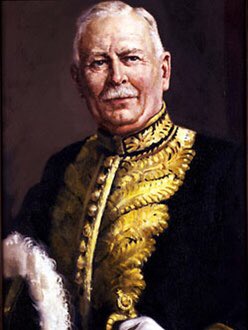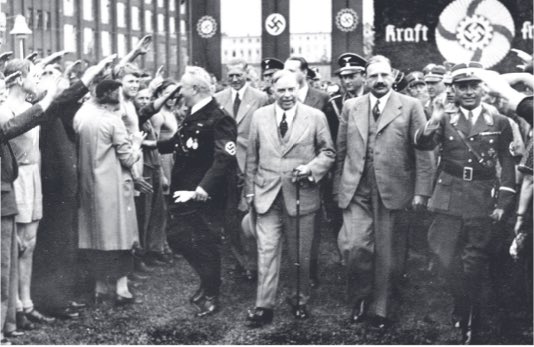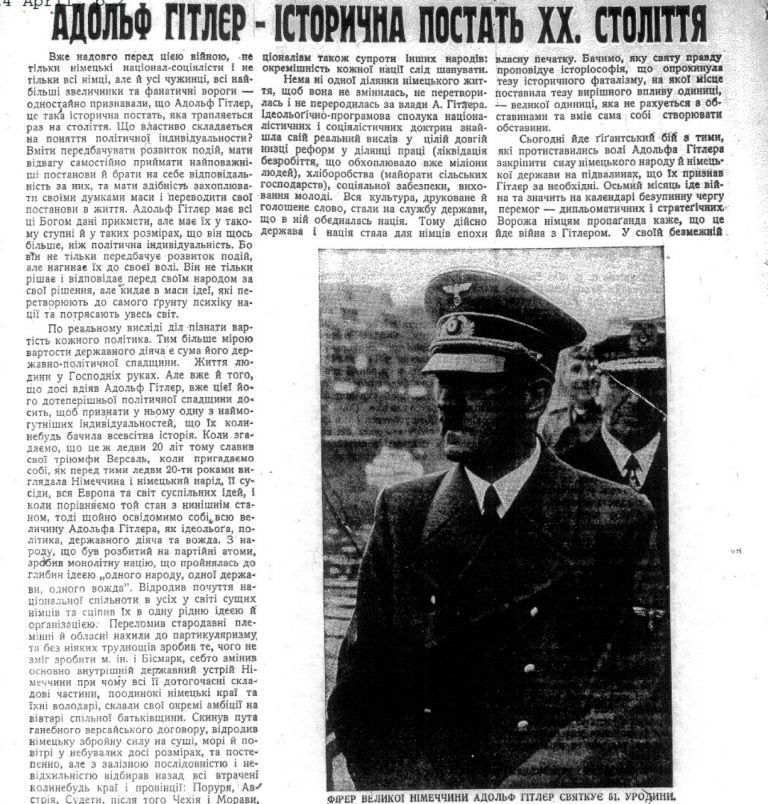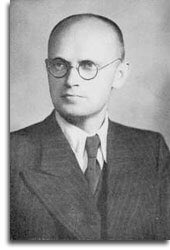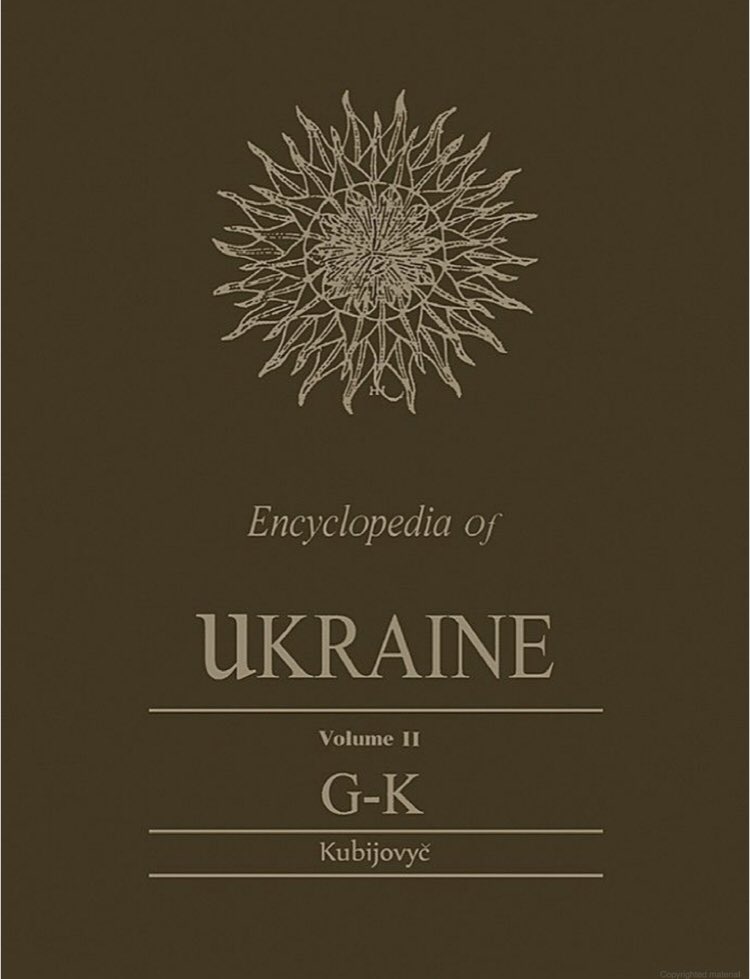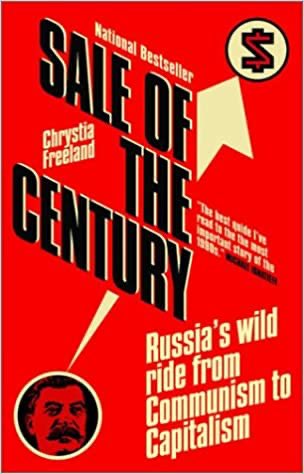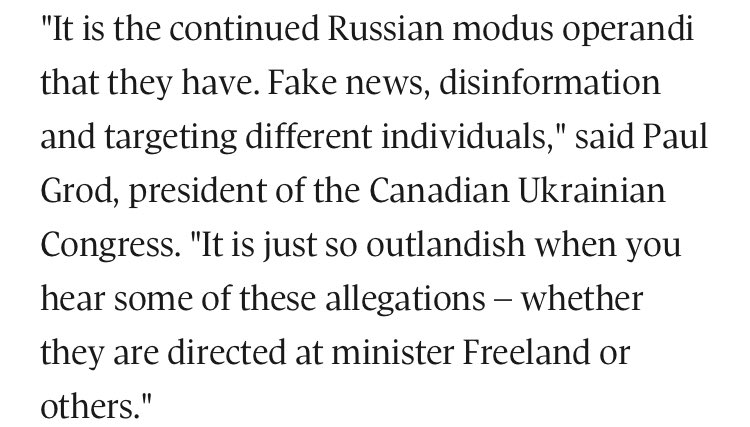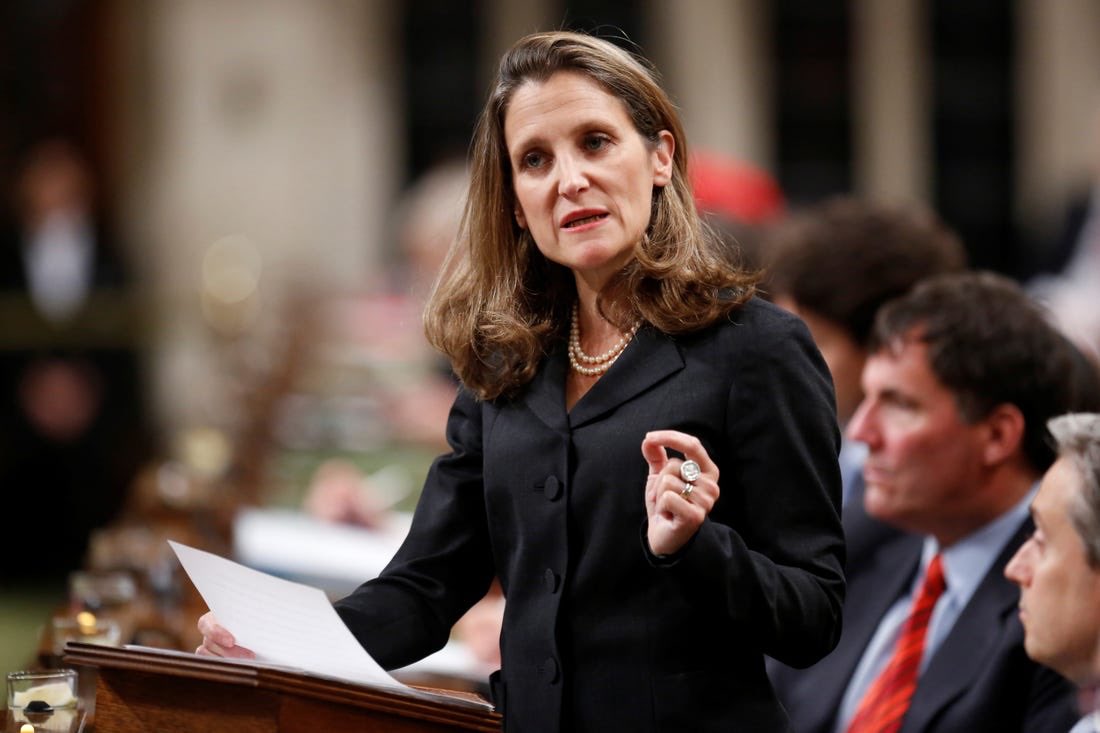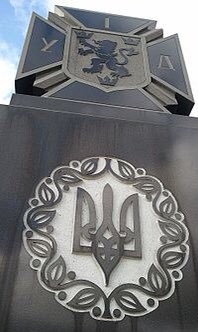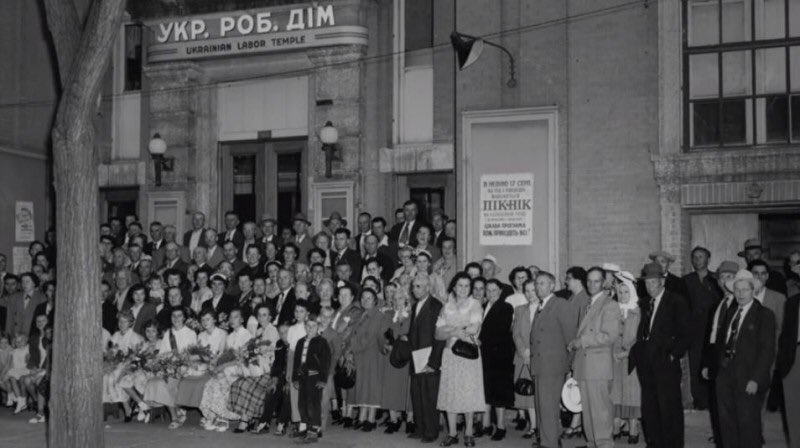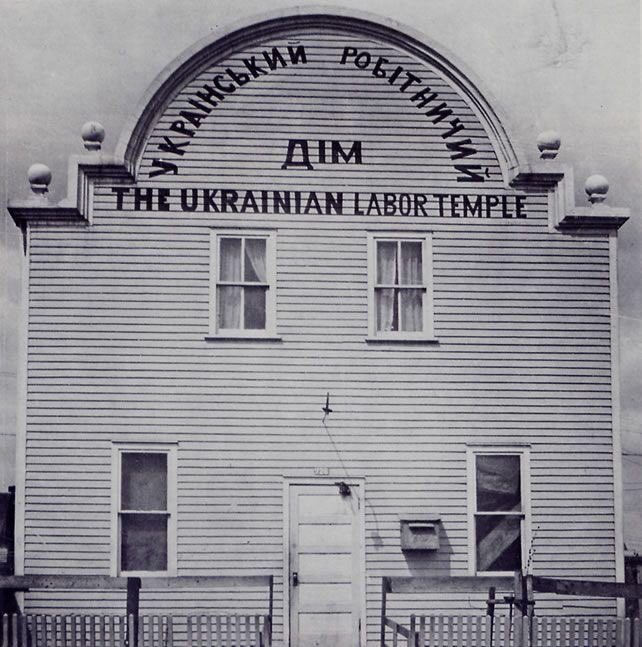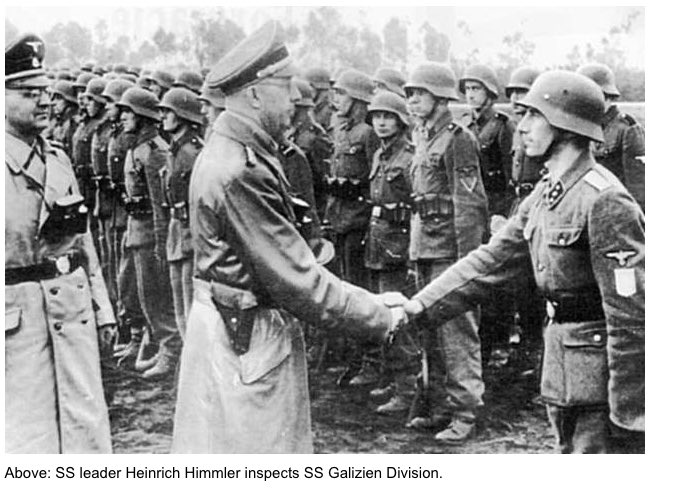This week we heard that the RCMP were investigating a “hate crime” in Oshawa after a statue was defaced. The statue in question was a monument to the Nazi SS Galicia Division. How did such a monument come to exist in the first place? (1) https://ottawacitizen.com/news/national/defence-watch/graffiti-on-monument-commemorating-nazi-ss-division-being-investigated-as-a-hate-crime-by-police">https://ottawacitizen.com/news/nati...
(All of the following can be found in greater detail of course: https://fernwoodpublishing.ca/book/canada-in-the-world">https://fernwoodpublishing.ca/book/cana... )
In the 1930s, Canada had warm relations with the emerging fascist governments. Canada opened a foreign office in fascist Japan and celebrated Japan’s violent conquest/enslavement of Korea, Manchuria, China as “putting her neighbours in better shape,” per envoy Randolph Bruce.(2)
Fascist groups were active in Canada, from the Balmy Beach Swastika Clubs (Toronto) to the chemises-bleu (Quebec). When a fascist general tried to overthrow Spanish democracy, Canada refused to intervene (though individual Canadians like the Mackenzie-Papineau Bat., tried).(3)
Meanwhile Canada was fostering warm relations with Nazi Germany. PM King’s meeting with Hitler in 1937 was aimed at conveying to Germany that Canada would support it so long as it limited its imperial ambitions to conquering Eastern Europe and the USSR. (4)
But Hitler’s ambition was too great and would ultimately pose a threat to the supremacy of the British Empire. War broke out and Canada played a role in the important cause of defeating Nazi Germany. But what about that early support for fascism? (5)
Ideologically, Canada was not opposed to fascism, which is why it continued to support fascist governments in Spain, Portugal, Nicaragua, El Salvador, Guatemala and would go on to support many more in the 20th century. But about that Galicia Division...(6) https://twitter.com/canadainthewrld/status/1279216656762503169?s=21">https://twitter.com/canadaint... https://twitter.com/canadainthewrld/status/1279216656762503169">https://twitter.com/canadaint...
After the war, Canada allowed thousands of former Nazis and Nazi collaborators to settle in Canada. The Galicia Division - a Ukrainian SS Waffen death squad responsible for mass murder of Jews - were among these new immigrants. (7)
Another prominent Ukrainian Nazi who came to Canada was Michael Chomiak (Mykhailo Khomiak) who was the editor of a Nazi newspaper in Krakow. He is famous now, of course, for his granddaughter: Canada’s deputy Prime Minister Chrystia Freeland. (8)
The paper Chomiak took over had belonged to Jews and he was personally given the former home of a Jewish family sent to the camps. He was so highly regarded by the Nazis that when they retreated to Vienna, they brought Chomiak with them. (9) http://www.yorku.ca/soi/_Vol_5_1/_HTML/Himka.html">https://www.yorku.ca/soi/_Vol_...
“With great joy,” editorialized The paper, “we welcome the establishment of a hist German order.” Reporting a mass murder of Jews, the paper noted that they had “got their comeuppance” and celebrated that that there was “not a single Jew left in Kiev.”(10) https://en.m.wikipedia.org/wiki/Krakivs%27ki_Visti">https://en.m.wikipedia.org/wiki/Krak...
After the war, Chomiak settled in Canada where he continued to publish work about Ukrainian history that expressed much of the same ideology as before, slightly tempered to avoid embarrassment. His co-author on an Encyclopedia of Ukraine was Volodymyr Kubijovich. (11)
Kubijovich had been the highest ranking Nazi collaborator in Ukraine and a founder of the SS Galicia Division. He and Chomiak produced a book that glorified the Ukrainian Nazis as having saved Ukraine for the Soviets. Chrystia Freeland contributed to the book. (12)
Canada’s deputy prime minister not only knew that her grandfather was a Nazi propagandist, she actively adopted his political line, built her own career around it. As a journalist she built her rep criticizing Russia, which she falsely claimed was predominantly ruled by Jews.(13)
When the Russian embassy drew attention to Freeland/Chomiak’s Nazi heritage, Freeland claimed that she was the victim of Russian misinformation. But the facts are all public record. She is even credited with reading a book about Chomiak’s Nazism published in 1996. (14)
Freeland had, throughout her career, celebrated and embraced her Nazi grandfather and made him a central part of her personal narrative. Her first speech in the House of Commons referred to the sacrifice and courage of her grandparents’ fight for Ukrainian freedom. (15)
So that monument that was defaced in Oshawa was a monument to Ukrainian nazis, who have enjoyed the strong support of Canada’s current deputy prime minister. This certainly raises questions about Canada’s support for the current fascist movement in Ukraine (for another post).(16)
But the monument is not just an insult to Jewish and other victims of the Nazi Holocaust. It is also a slap to the face of the thousands of Ukrainian immigrants to Canada who escaped the Tsarist pogroms and became committed leftists in Canada. (17) https://canadiandimension.com/articles/view/manufactured-ignorance-about-the-ukrainian-canadian-left">https://canadiandimension.com/articles/...
Many Ukrainian immigrants in Canada pre-WWII were active in labour and communist parties, espoused principles of equality, solidarity, anti-racism. They demanded (unsuccessfully) Canada accept Jewish refugees fleeing the holocaust. Canada put many of them to internment camps.(18)
After the war, when Canada began importing Ukrainian nazis, these earlier Ukrainian immigrants were targeted with violence. The SS veterans firebombed a Ukrainian labour temple in Toronto in 1950. Soon the Ukrainian emigre community was dominated by the right. (19)

 Read on Twitter
Read on Twitter